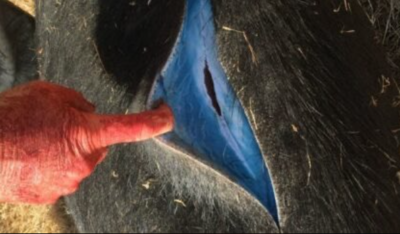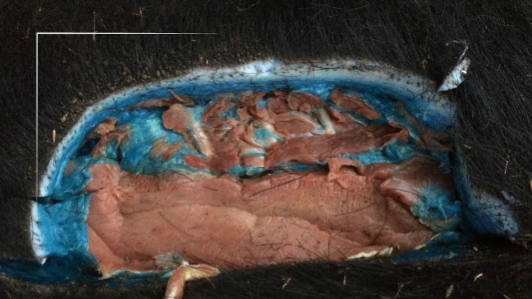ARTICLE AD BOX

Wild pigs turning electric blue (Photo via X)
Nature is full of surprises, and each species is unique, but what happens when an ailment turns this into a disaster, taking a toll on the precious wildlife?Recently, images have been circulating online that show wild pigs turning bright blue inside sounds, and although this story sounds like a fictional urban legend, this is happening in reality.Pigs have been fat and muscle-stained a vivid, slushie‑blue tint. Turns out, these pigs didn’t stumble into a barrel of paint, instead, they ate some awful bait!
Blue‑tinged wild pigs are real!
In Monterey County, California, a wildlife trapper reported an unsettling discovery in March, where multiple wild pigs whose muscle and fat were dyed a shocking neon blue.And shockingly, the reason behind it was that these pigs had eaten an anticoagulant rodenticide, known as diphacinone, which is intentionally dyed blue to identify it as toxic bait. Investigators from the California Department of Fish and Wildlife confirmed traces of diphacinone in the stomach and liver of one sampled pig, as said in a press release.

Wild pigs turning blue (Photo via o23ecotech via Instagram)
How did the pigs end up blue?
Trappers observed the animals actively targeting ground squirrel bait stations, breaking them open to eat the diphacinone-laced pellets. While these bait stations are legal for agricultural use, they became unintended traps for non‑target species like wild pigs. Once ingested, the dye and toxin accumulate in the body, coloring fatty tissue and muscle, but the blue hue may not appear in every contaminated animal.
The health warning to hunters
Officials emphasize caution. Dr. Ryan Bourbour, CDFW’s Pesticide Investigations Coordinator, warned in the press release, “Hunters should be aware that the meat of game animals, such as wild pig, deer, bear, and geese, might be contaminated if that game animal has been exposed to rodenticides.” He stressed that rodenticide exposure can affect any wildlife near treated areas.
Dye isn’t a reliable safety check
While the blue colour is a conspicuous warning sign, its absence doesn’t guarantee safety. A 2018 USDA‑linked study found anticoagulant residues in 10 of 120 wild pigs, collected in similar environments, which is a sign of widespread exposure even without visible symptoms.
What is the blue dye rodenticide used for?
Diphacinone is meant to target rodents, but its impacts extend beyond contaminated animals and can pass toxins up the food chain. Birds of prey, scavengers, and even predators may suffer secondary poisoning. The CDFW recommends integrated pest management approaches and secure baiting practices to minimize unintended exposure.
What you should do if you encounter blue meat
CDFW encourages people to report unusual incidents, including blue tissue or other abnormalities, to the CDFW Wildlife Health Lab via email at [email protected].



.png)
.png)
.png)
















 1 day ago
4
1 day ago
4









 English (US) ·
English (US) ·